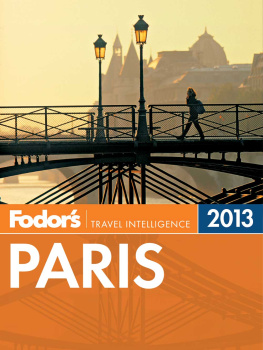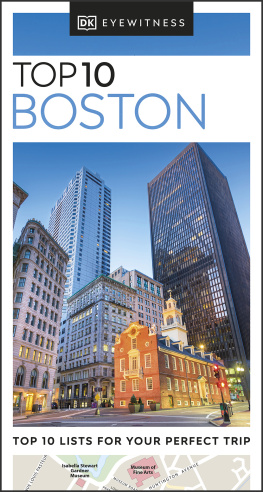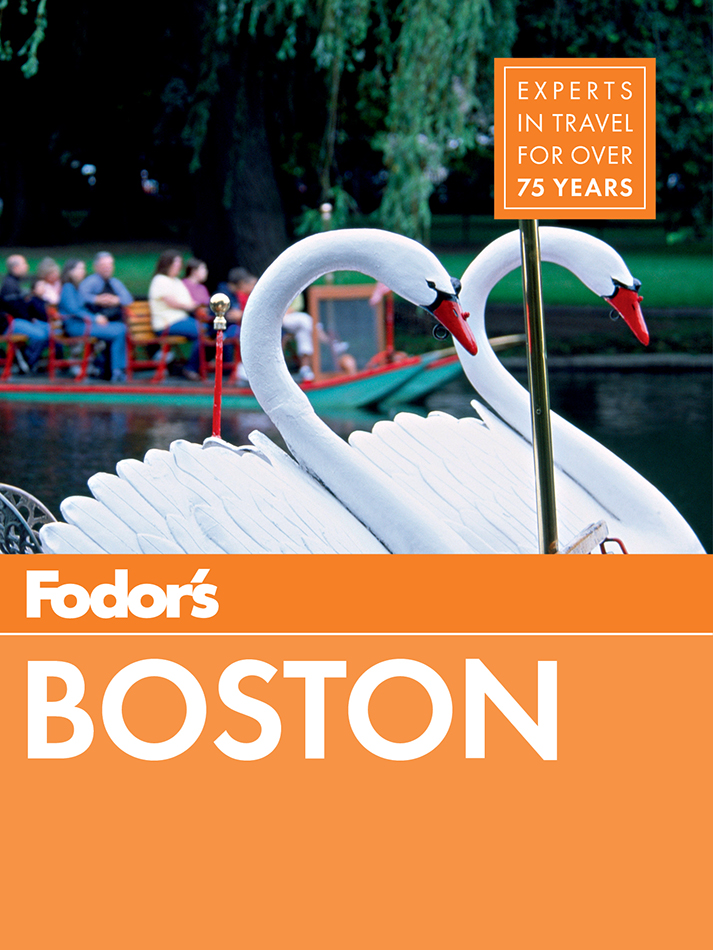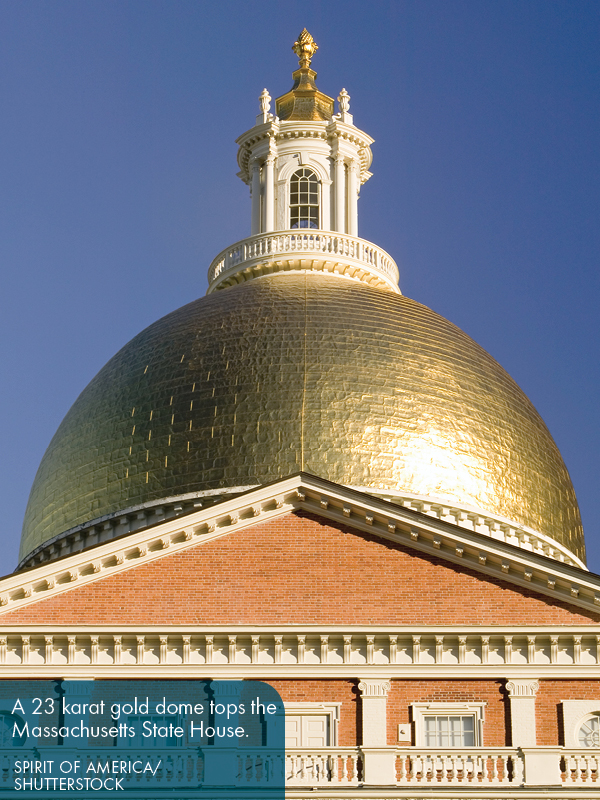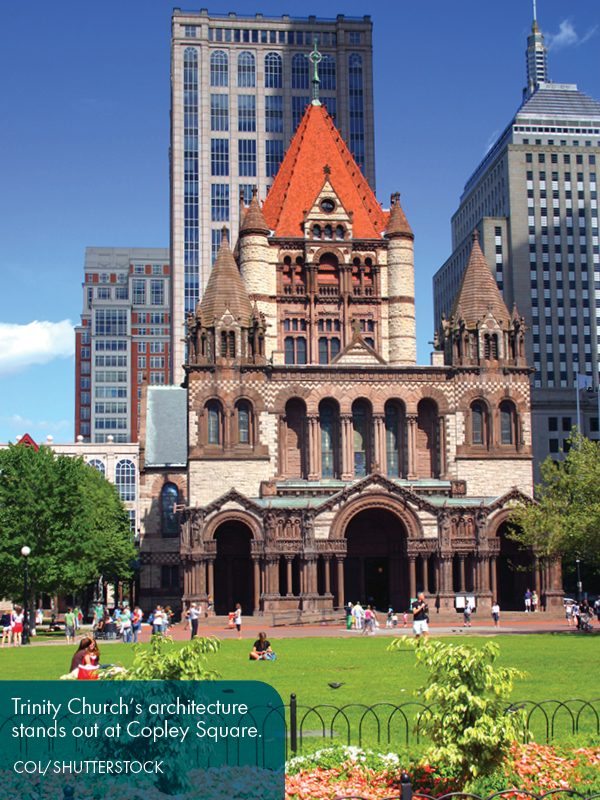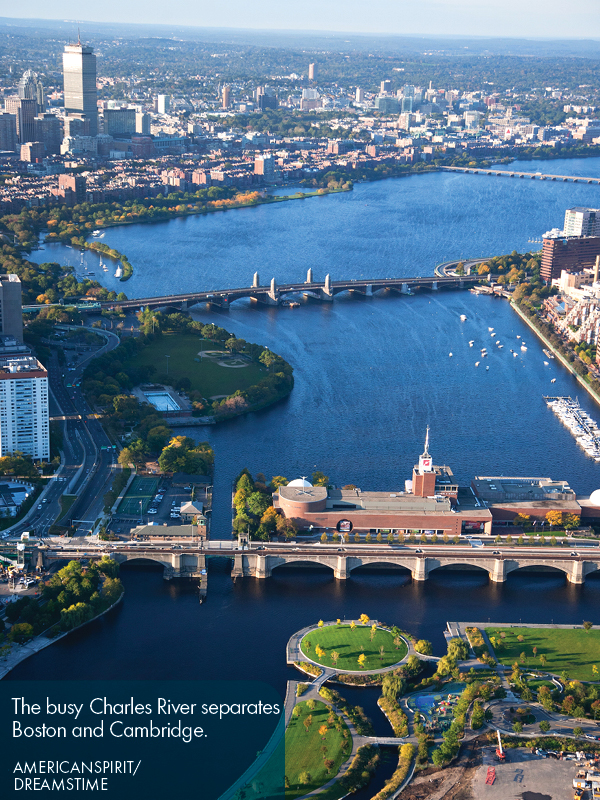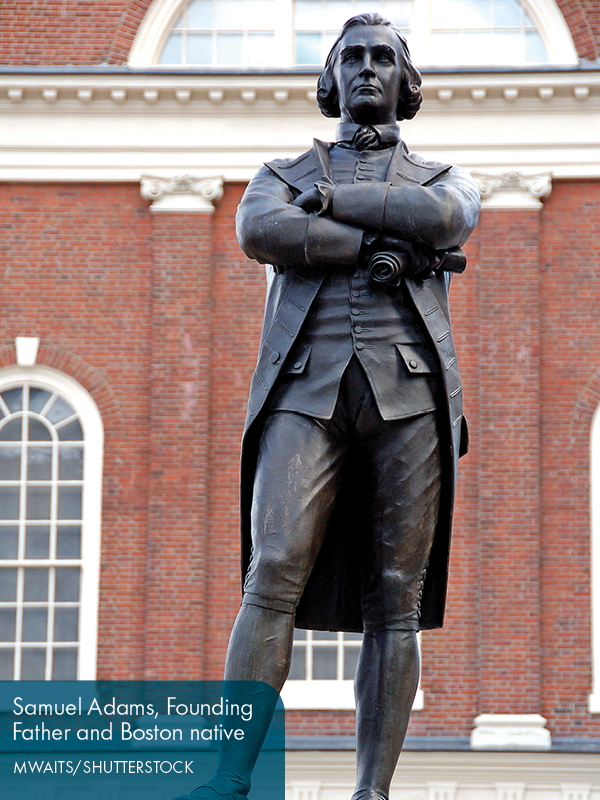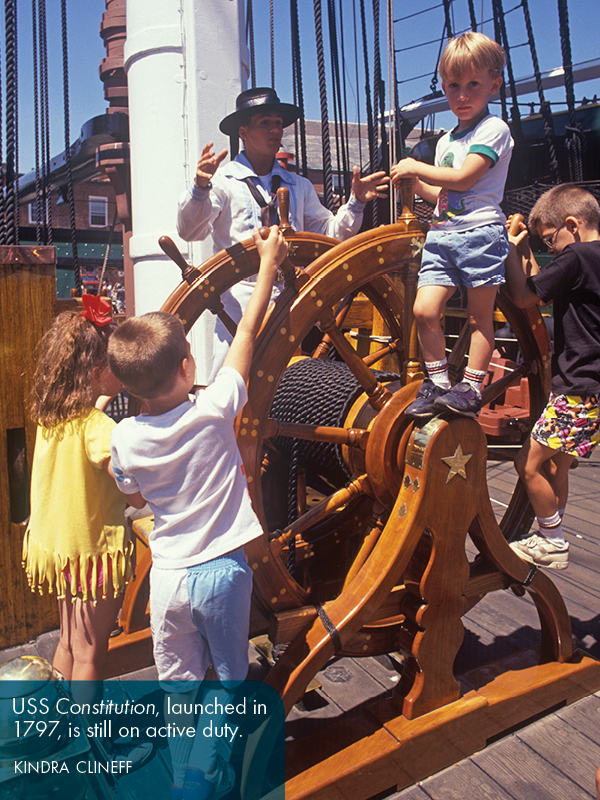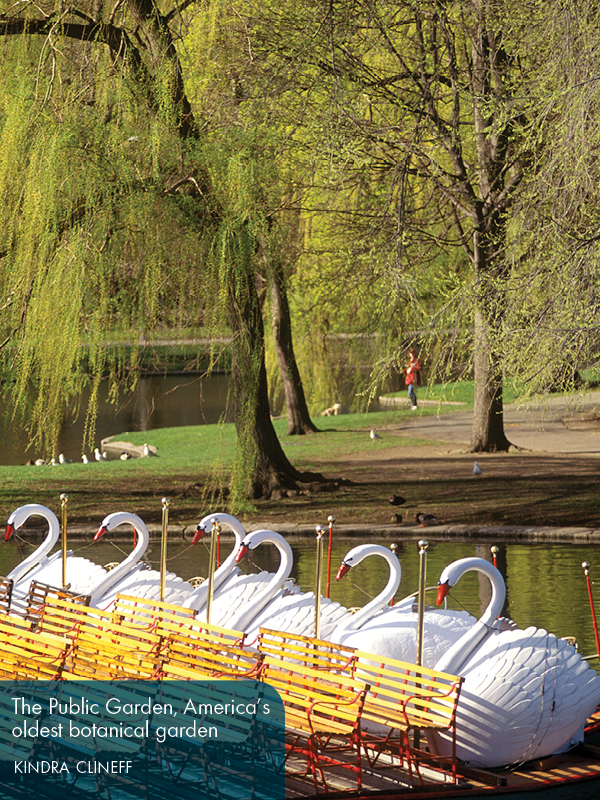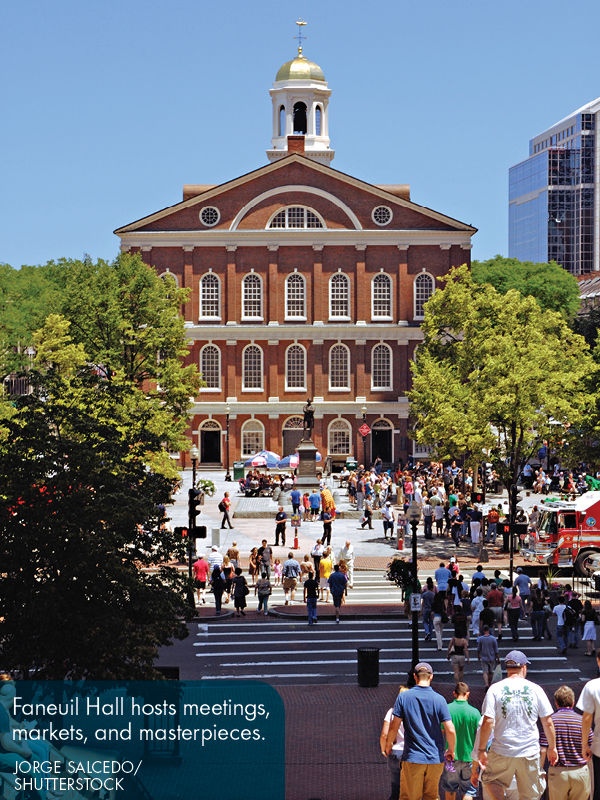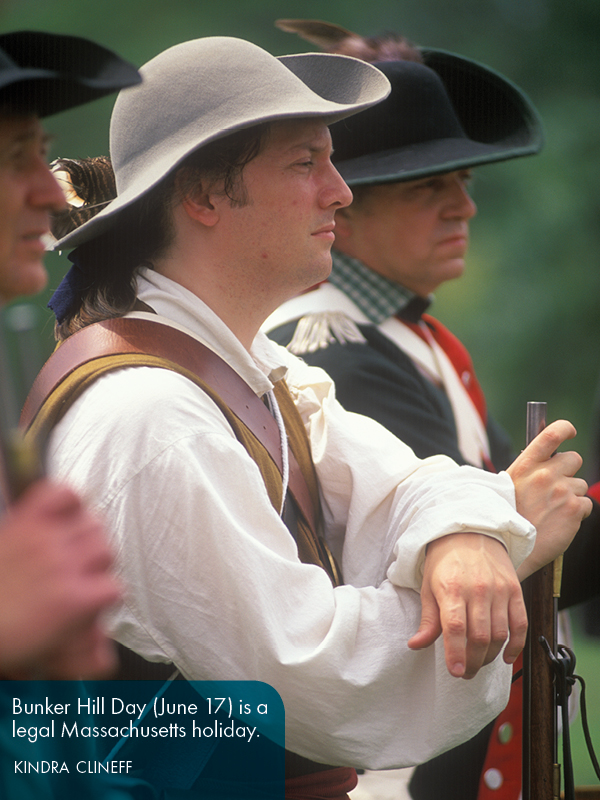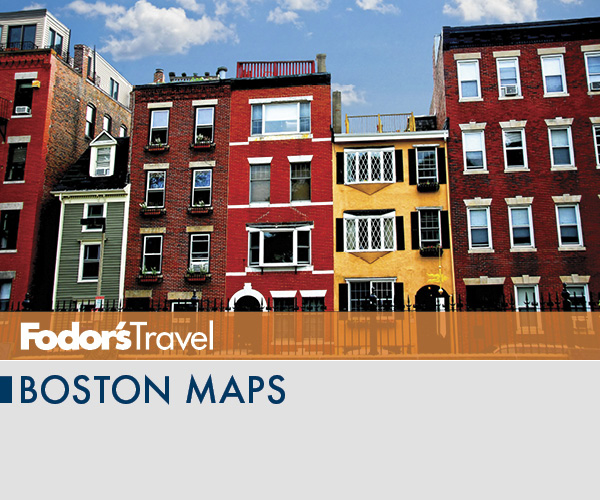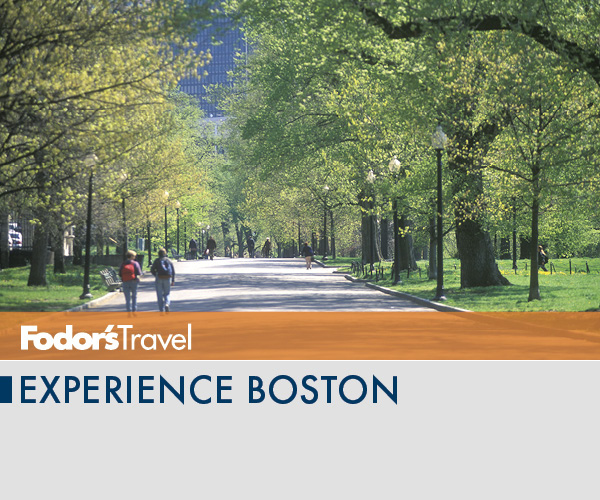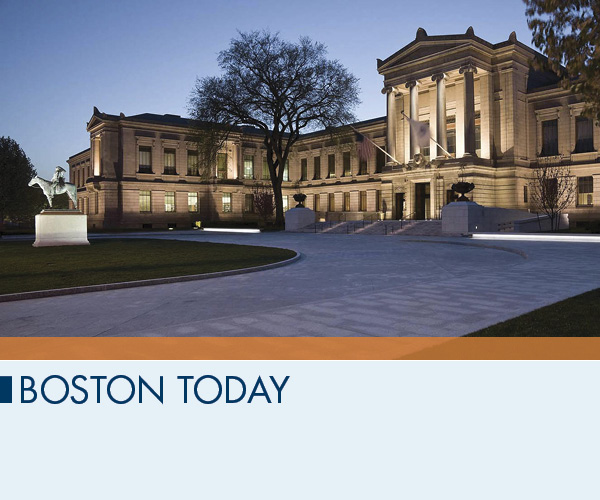Boston is the undisputed epicenter of American history. Much of the political ferment that spawned the nation took place here, and visitors are often awed by the dense concentration of sites. Locals, on the other hand, take them in stride. Sure, they revere Revere as much as the next guy. Yet Bostonians refuse to see their hometown as some sort of frozen-in-time memorial to the days of yore. This is a living citynot a museumand, as such, it continues to evolve.
Enshrining Art
Although no one refers to Boston as The Athens of America anymore, appreciating art seems to be as characteristic of folks here as dropping Rs and taking the T. That explains why the Museum of Fine Arts renovated its I. M. Pei building and reopened it as the Linde Family Wing for Contemporary Art in 2011less than a year after the ribbon was cut on its new Art of the Americas wing. The latter, boasting 53 galleries on four floors, an auditorium, and soaring central courtyard, increased MFAs size by almost a third. Not to be outdone, in 2012 the Isabella Stewart Gardner Museum unveiled its own stunning new complexentry, concert hall, glassed garden, and galleryby architect Renzo Piano. Hes also the serene genius behind Harvard Art Museums $400-million reinvention, set to debut in late 2014.
Harboring Hope
This city has long been defined by its harbor: the first colonists were largely drawn here because of it, and local commerce has been inextricably bound to the water ever since. Over time, development obscured the view, and what was visible wasnt always pretty. (Suffice it to say that more than British tea and molasses got dumped in it!) Nevertheless, a decades-long, $3.8-billion clean-up effort has paid off. See for yourself on HarborWalk, a 45-mile-long path linking Columbus Park to the New England Aquarium, Seaport, and Fan Pier, with harborside sites, picturesque piers, parks, working wharves, hotel lounges, and urban beaches. New attractions keep popping up on it, like Liberty Wharf, with four restaurants (notably a Legal Sea Foods complex), a water-view plaza, and public marina.
Communing with Kennedys
The year 2013 marked the 50th anniversary of the assassination of John F. Kennedy, and the memory of Bostons beloved native son lingers on. As proof, witness a 90-minute walking tour covering sites associated with JFK or the inauguration of a 30,000-square foot wing at the John F. Kennedy Presidential Library & Museum, with archival space and a gallery for temporary exhibits relating to his 1,000 days in office. The legacy of brother Ted is equally apparent next door at the $60-million Edward F. Kennedy Institute. Slated to open in autumn 2014, it will host public programs and house a replica of the Senators Capitol Hill office. The late family matriarch hasnt been forgotten, of course: the Rose Fitzgerald Kennedy Greenway, a lively linear park threading through Downtown, is named in her honor.
Exercising Options
There are lots of ways to get around Beantown: foot, cab, bus, ferry, subway, trolley, water taxi. Factor in cool conveyances aimed at vacationers, which run the gamut from Segways to World War IIstyle amphibious craft, and the list lengthens. But these days theres another eminently practical way for travelers to be transported: three-speed bicycle. Begun in 2011, the Hubway bike-sharing program makes it easy because pedal pushers can cheaply access one of 1,000 cycles from more than 100 self-service docks citywide.
Seeing Stars
Lights! Camera! Action! Those words are being heard a lot lately, because a state tax credit for film producers has translated into a moviemaking boom. As a result, playing spot the star is a popular pastime. Big-screen names like Leonardo DiCaprio, Rooney Mara, Denzel Washington, and homegrown celebs Ben Affleck and Mark Wahlberg (raised in Cambridge and Dorchester respectively) have all worked here recently. Ditto for emerging talents such as Jesse Eisenberg, Mila Kunis, and Anna Faris. Interested in an entirely different type of star? No problem. The Museum of Science is more stellar than ever thanks to the 2011 unveiling of its renovated Charles Hayden Planetarium, the centerpiece of which is a $2-million Zeiss Starmaster Projector. Free Friday night stargazing sessions, March through November, light its rooftop observatory.
Changing the Channel
Revitalization of the Fort Point Channel neighborhood has been ongoing for a decade: the dynamic Boston Convention & Exhibition Center, the brazen Institute of Contemporary Art, the expanded Childrens Museum (by the monster Hood milk bottle, now celebrating its centennial), and the opening of Atlantic and Liberty wharves. The areas new high-water marks arent beside the channel but rather in it: the Boston Tea Party Ships (a trio of replicas with a matching museum) stand by the Congress Street Bridge, with guides in period garb. On-the-water recreational options allow tour boats, kayaks, and floating restaurants and entertainment barges in the mile-long channel.
Eating Wicked Good Food
Yes, do try traditional dishes like baked beans, codfish cakes, and slabs of roast beef at Yankee haunts like Durgin-Park. But Boston lays claim to a long line of innovative chefs. M. Sanzians invention of Boston cream pie in 1856 made quite a stir among Parker House patrons; and a century later, Julia Child launched a culinary revolution from her Cambridge kitchen. Today, top chefs such as Jodi Adams, Gordon Hamersley, Joanne Chang, Barbara Lynch, Ken Oringer, Michael Schlow, Lydia Shire, Ming Tsai, Jason Bond, Ana Sortun, Tim Wiechmann, and Tony Maws make dining out a gastronomic adventure. These hometown favorites have created a thriving independent restaurant scene; an ideal time to taste their creationsand those of up-and-coming sous-chefs or competitorsis during Restaurant Week. The biannual event (March and August) sees more than 200 eateries serving three-course prix-fixe dinners for as little as $33.


